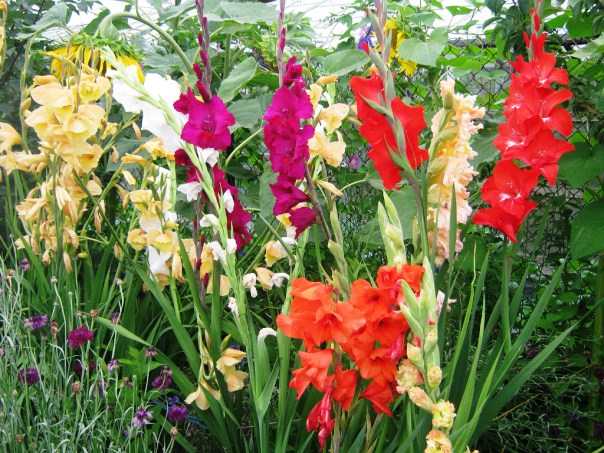
Today, the cultivation of various plants is of great importance. Some of them have always been planted on their sites by flower lovers, while others have become popular only in recent years. But gladioli in all this diversity has a special place.
With proper planting and care, these plants are able to please with an abundance of peduncles and the beauty of colors. In recent years, the growing popularity of growing these beautiful and bright arrows in pots and containers, which are placed at home and on the street.
Flower beds with these amazingly beautiful and charming aroma plants have become an integral part of the urban and rural landscape. Since ancient times, gardeners have been interested in the question of how to extend the life of gladioli. With proper planting and care, is it possible to grow these arrows in pots and containers so that they give joy both at home and on the street. Our article is dedicated to the solution of these issues.
Content
Gladioli - Description
This representative of the Kasatikov family belongs to perennials. It has gained its popularity since the mid-18th century. Currently, wild gladiolus species grow in South African, European and Asian countries. There are about 200 varieties of them. In Latin, "gladiolus" means "sword." This name is based on the outward resemblance of these majestic colors to weapons.
Even in ancient times, these plants were considered weeds, so they were ruthlessly exterminated in large quantities. Now it’s hard to find sites wherever these magnificent flowers grow. In recent years, they began to grow gladioli in pots, which are placed on loggias, balconies, in apartments and houses. In the summer, giants are carried to the territory of the garden plot.

- Arrows grow up, so they subsequently stand straight. The size of the arrows varies from 50 to 150 cm, but sometimes there are gladiolus representatives, rising one and a half meters high.
- There are many gladiolus varieties that differ depending on the appearance, flowering period, color and size.
- From the roots grow stems having a large length, xiphoid form of foliage. They have a length of 50 to 80 cm.
- The root part of the plant is quite developed. For this reason, containers for giants should be selected carefully, depending on the height of the arrows.
- There is an annual update of the bulbs, children are formed, which then act as planting materials.
- Externally, peduncles look like colossi, rising to 50-90 centimeters long.
- One peduncle gives about 20 flowers with 6 petals, which in shape resemble a funnel-shaped structure and have a different size. Flowers are whitish, reddish, pinkish, purple, yellowish and others.
Since ancient times, gladiolus belongs to perennial plants, their reproduction occurs by dividing the bulbs. The plant is very thermophilic, therefore does not tolerate cold winters. If you plant a gladiolus in a pot, then this will protect the arrows from freezing, and next spring the arrowheads can be put out of the house again into the air.
Varieties of gladioli for planting in pots
These giants of the flower world grow rapidly and quickly, therefore, in order to grow a gladiolus in a house in a pot, it is worth initially deciding on certain varieties.The usual varieties of these flowering varieties that are planted in suburban areas will not work. You should choose in favor of mini-varieties that can grow to a height of 25 to 80 cm. But sometimes you can plant large-flowered plants, picking up a large capacity for this purpose. The following varieties are most suitable for growing gladioli in pots:
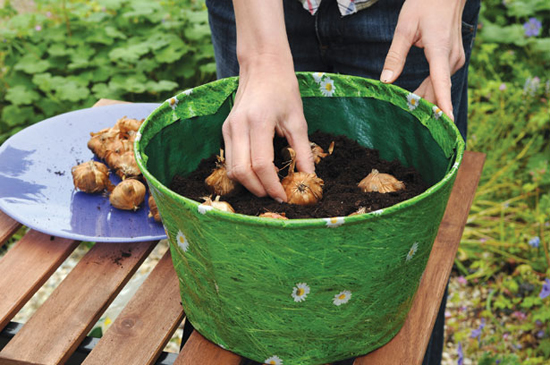
- Inflorescences "Georgette" have flowers painted in a reddish and yellowish tint. This giant is great for growing in containers.
- The giant “Moscow White Stone” is very beautiful and unusual. The height of the inflorescence rises to 70 cm. The inflorescences are distinguished by a corrugated petal part.
- Tinkerbel is a butterfly or butterfly variety. The plant grows to 45-75 cm. The inflorescence has the appearance of an ear with bright orange flowers having a yellowish pharynx.
- The cultivar “Melody” has inflorescences with a delicate pink color. In the center is a large red spot. An arrow can grow to a meter high.
- A dwarf variety called the Bow Peep, with 70-centimeter peduncles, has gained popularity among flower growers. The shape of the petals folded, gently apricot hue.
- Often chosen for planting gladioli in a pot is the White City variety. The diameter of the flowers is from 3.5 to 8 cm, which allows us to consider the variety as medium-flowering. When flowering, 23 whitish flowers grow on the arrow.
- One of the popular representatives of primrose-like varieties is “Columbine”, on the inflorescence there are many small flowers that have a bright and colorful shade. Coloring of flowers is red with small white spots.
- Perfect for planting Robinetta gladioli in a container. Inflorescences are able to grow up to 70 centimeters high. On the inflorescence there are many petals of a dark purple hue.
- The most unusual variety among the entire gladiolus variety is Greenbird. The name itself gives an idea of its appearance. Literal translation means "green bird." On the peduncle there are flowers of a saturated green-yellowish color.
Breeding methods
Before you grow gladioli in a pot or in a container, you should learn about the nuances of propagation of varieties. In modern conditions, gladioluses multiply in several ways:
- seeds;
- corm division;
- tuber buds.
Now dwell on each in more detail.
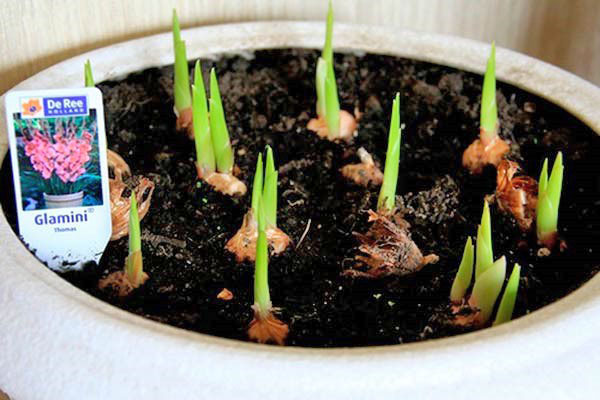
Seed propagation
Very often, breeders use this method to develop new gladiolus varieties. When growing gladioli in pots at the cottage by seeds, there is a loss of maternal traits, expressed in loss of color and size. Sowing of seeds occurs at the end of winter in a container specially prepared for this. Before sowing gladiolus indoor, seed treatment is carried out using a humate-sodium substance dissolved in water for 2-3 hours.
After sowing the seeds, they are carefully watered. In the spring they take out containers with gladiolus home from the premises.
Reproduction of gladioli with corms
When growing gladioli in pots on the street, corms are used. The roots have a two-tiered structure. On the first tier is a vegetative process, with its help the bulb is fed, and at the end of the year its dying is observed. The second tier is represented by the replacement corms. It is divided into several parts with a knife, leaving one sleeping baby and a small number of roots. Before planting, the solution is treated with manganese using charcoal. Subsequently, the dividend is planted in a pot, while the bottom should be at the top.
Propagation by tuber buds
You can grow gladioli in a pot from a tuber. One bulb is capable of producing 15-100 tuber buds, varying in size and degree of germination. Externally, the tuber is a stalk that has one scale. The baby matures within 90 days.
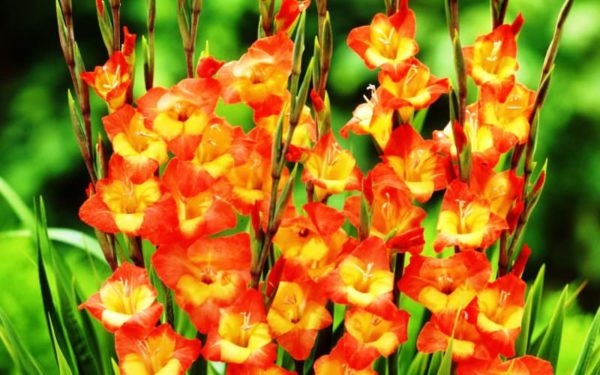
On the surface of the baby there is the appearance of a leaf plate above and below the root tubercles. Usually, in order to grow gladioli in pots, children with a diameter of 0.5 to 1 cm are planted. When growing gladioli in small containers, they can be planted for a while in pots with a removable bottom and nutritious soil.
In the spring, you can take out gladioli in pots on the street. The question of how to plant has already been addressed. Now dwell on the rules of landing and care.
Landing and care
Is it possible to grow gladioli in pots at home? A similar question often arises among flower lovers. They want to admire the gladioli in pots throughout the year, so they are interested in the rules of planting and care. Before planting a gladiolus, you need to choose a container depending on the size of the flower. Then special soil is poured into the container. For 2-3 days the soil is kept in a warm and dry place. In order to grow gladioli in a cache-pot, it is necessary to take healthy planting material for cultivation. The bulb should not be damaged and have dry patches. In addition, it should be ensured that it does not mold and does not have wrinkled areas.
Typically, gladiolus plants in a pot are usually planted in the spring. Usually, the end of spring is chosen for planting, so that the conditions are warm enough. Bulbs are cleaned of scales, and then they process the fungicide dissolved in water. This reduces the risk of plant damage by various diseases. You can put the bulbs in a solution of Cytovitis for a day. In addition, the tubers are treated with a rooting agent. All of the above procedures are carried out before planting work for a month. If the plants have not taken root for 2 weeks, then they must be discarded.
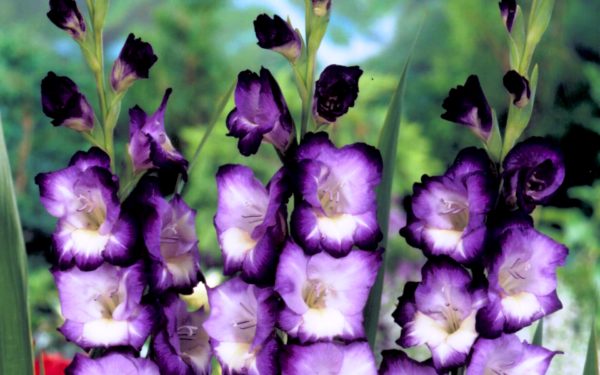
Each bulb is planted to a 7-12-cm depth with a distance of 6-7 cm. After the pot is placed in a place lit by sunlight and not exposed to strong winds. At the time when flowering begins, it is necessary to protect the flower from rainwater.
If gladioli are grown on the balcony, then planting and care are carried out in the same way as when growing on the street. The plant is fed with the help of organic and mineral fertilizers. It is advisable to loosen the soil and weed it, removing any weed grass.
To gladioli pleased with a large number of flowers, it is worthwhile after planting to take care of the plants carefully in the pot. Then flower stalks will please for a long time.

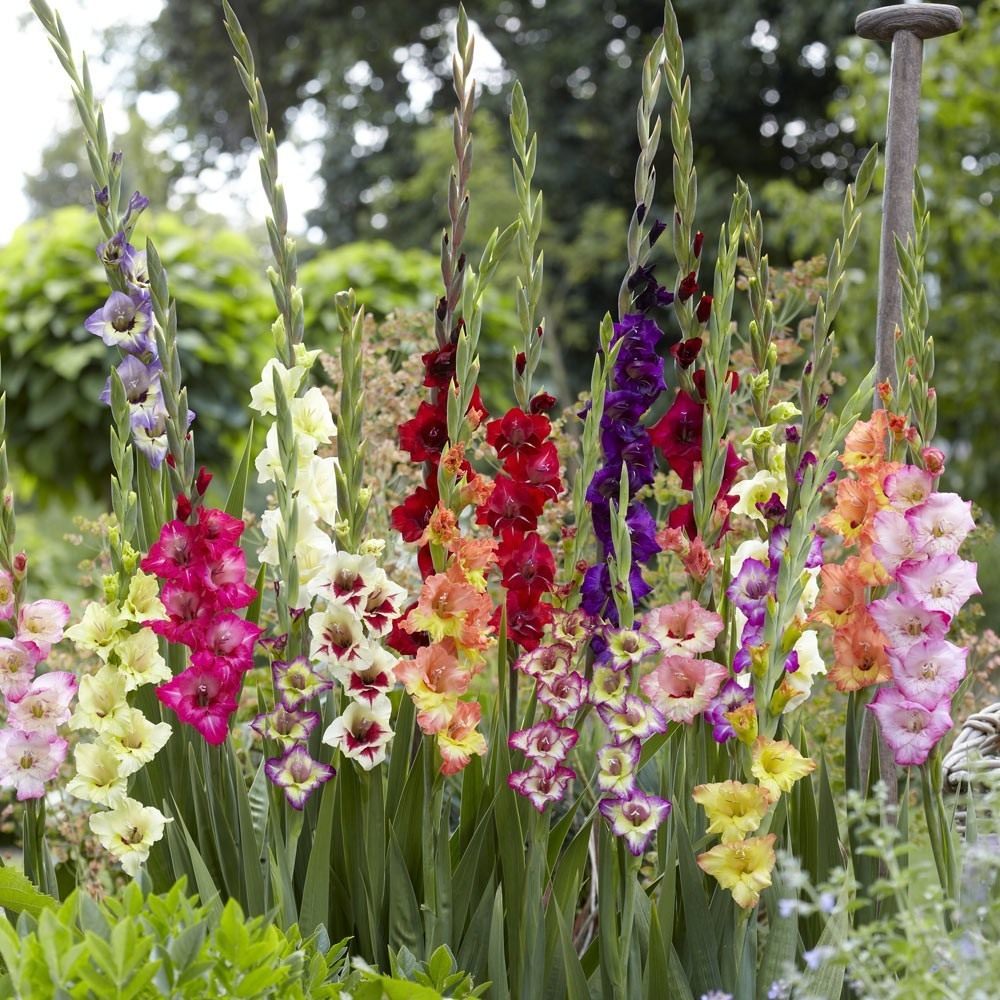
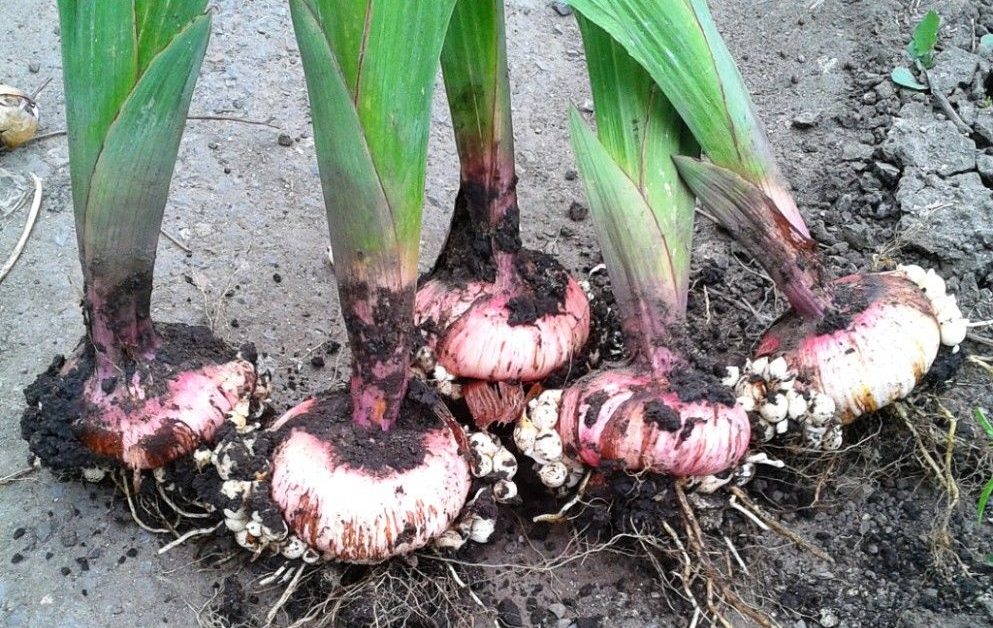
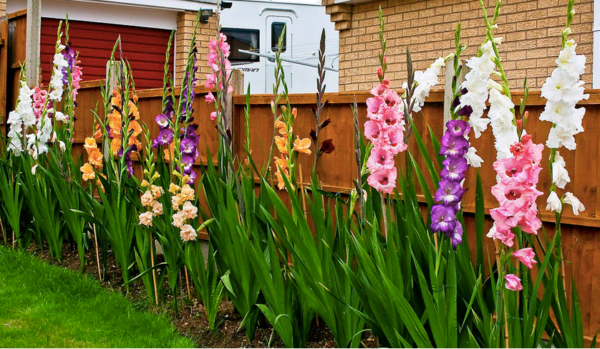
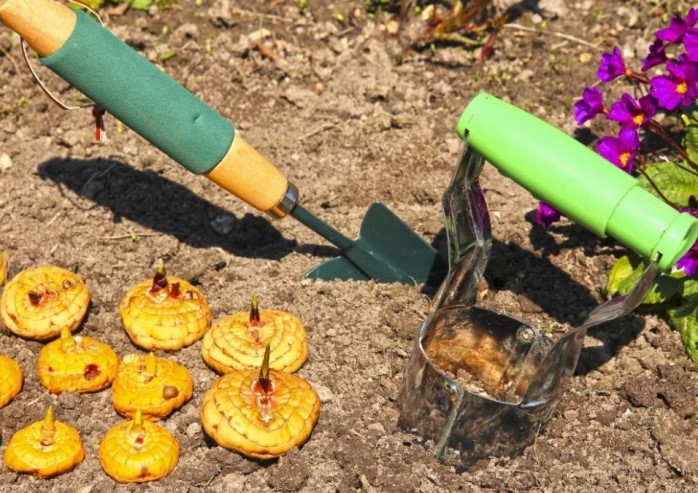 When and how to plant gladioli in spring in open ground
When and how to plant gladioli in spring in open ground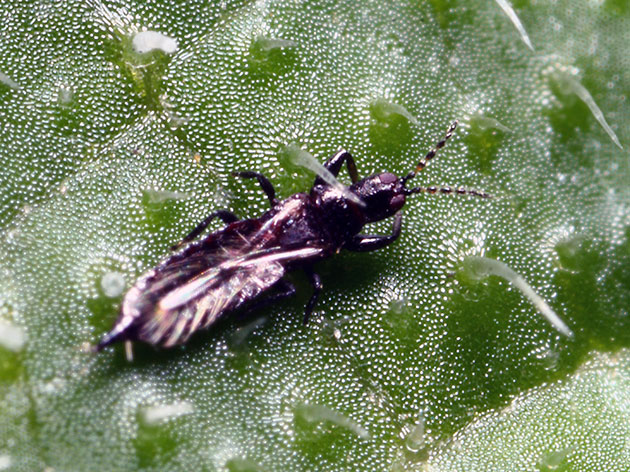 How to deal with thrips on gladioli
How to deal with thrips on gladioli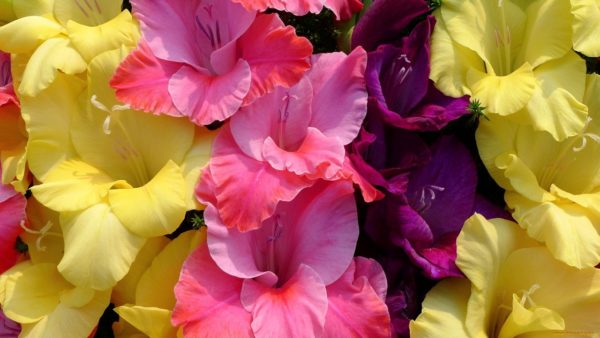 Gladioli: landing and care in the open ground
Gladioli: landing and care in the open ground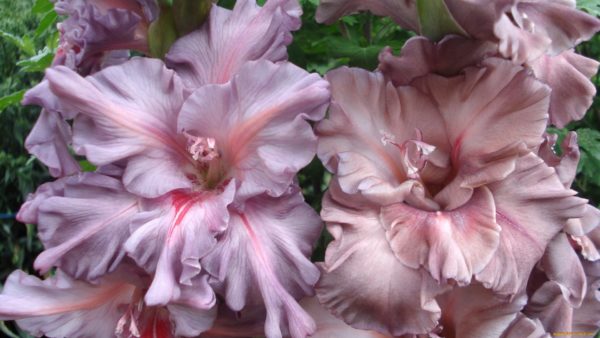 Children of gladioli: what to do with them
Children of gladioli: what to do with them